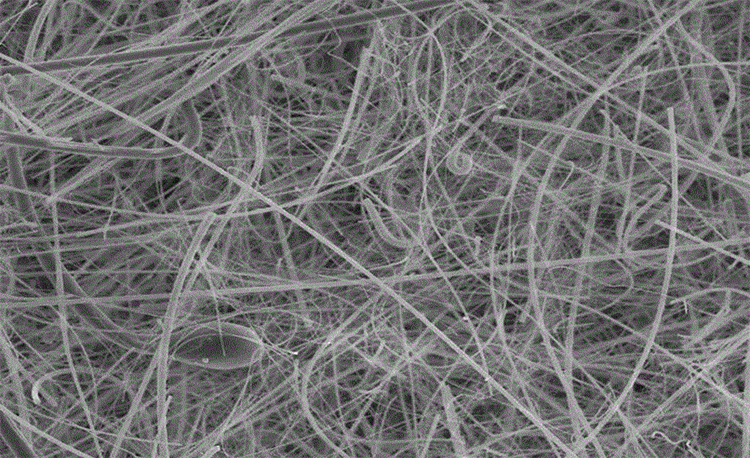In building insulation and acoustic design, glass wool has become the core material due to its lightweight and efficient characteristics. But few people realize that the quality of its performance largely depends on a seemingly small parameter - fiber diameter.
These invisible glass fibers (usually 3-15 microns) are actually the "invisible manipulators" that determine the material's thermal conductivity and sound absorption frequency response. This article will use an engineer's perspective to uncover the scientific logic and engineering value behind fiber diameter.
1、 How does fiber diameter affect insulation performance?
1) The "Air Game" of Thermal Conductivity
The insulation ability of glass wool comes from its "solid gas composite structure":
Solid fibers: form a supporting skeleton, accounting for only about 5% -10%;
Air layer: accounting for over 90%, the thermal conductivity of still air is extremely low (≈ 0.026 W/m · K).
The smaller the fiber diameter → the more fibers per unit volume → the air is divided into smaller enclosed chambers → the heat transfer path is more tortuous. Experiments have shown that reducing the fiber diameter from 15 μ m to 5 μ m can decrease the thermal conductivity by 15% -20%.
2) The critical value paradox: the finer the better?
Advantage range: 3-8 μ m (mainstream range of centrifugation method)
Optimization of air chamber, with a minimum thermal conductivity of 0.032 W/m · K;
Fiber flexibility is enhanced, making it less prone to breakage during construction.
Risk of being too fine (<3 μ m):
The production cost has increased dramatically (requiring higher speed centrifuges);
Fibers are prone to scattering, causing respiratory protection issues.
2、 The regulation mechanism of fiber diameter on sound absorption performance
1)The "three-step process" of converting sound wave energy
The sound absorption essence of glass wool is to convert sound energy into heat energy, and the process is divided into:
Sound wave incidence: entering the interior of porous materials;
Friction energy dissipation: Friction between air and fiber surfaces;
Thermal conduction dissipation: Fiber vibration generates heat.
2) The correlation between diameter and sound absorption frequency
High frequency killer (>2000Hz):
Fine fibers (3-6 μ m) have a large surface area, which matches the short wavelength of high-frequency sound waves, and the NRC (Noise Reduction Coefficient) can reach 0.9 or above.
Application scenarios: recording studios, high-end conference rooms.
Mid low frequency coverage (125-1000Hz):
Coarse fibers (8-12 μ m) increase flow resistance and enhance low-frequency absorption, but at the cost of sacrificing some high-frequency performance.
Application scenarios: Factory computer rooms, subway soundproof walls.
Experimental data comparison (under the same density conditions):
| Fiber diameter | Sound absorption coefficient(125Hz) | Sound absorption coefficient(1000Hz) | Sound absorption coefficient(4000Hz) |
| 5 | 0.25 | 0.8 | 0.95 |
| 10 | 0.35 | 0.7 | 0.85 |
3、 The law of balance in engineering practice
1) How to choose between insulation and sound absorption?
Priority insulation scenarios (such as cold storage and pipelines):
Choose 5-8 μ m fine fibers with a density of 60-80kg/m ³ to maximize the proportion of air layer.
Scenarios that prioritize sound absorption (such as cinemas and hospitals):
Adopting a "dual gradient structure" - the surface layer of 6 μ m fibers absorbs high frequencies, while the bottom layer of 10 μ m fibers enhances low frequencies, with a comprehensive NRC>0.85.
2)The game between cost and performance
Economic plan:
Flame method glass wool (fiber diameter 8-12 μ m), with a cost reduction of 15% -20%, is suitable for warehouse partition walls with lax temperature control requirements.
High performance solution:
Centrifugal ultrafine cotton (3-5 μ m)+nano hydrophobic coating, used for high value-added projects such as data centers.

4、 Future Trends: Intelligent Fibers and Customization
Precision diameter control technology:
Real time adjustment of centrifuge speed through AI algorithm to produce "super glass wool" with 0.5 μ m grade fibers (laboratory stage).
Biomimetic structural design:
Imitating the multi-level fiber arrangement of bird feathers, achieving broadband sound absorption (500-5000Hz NRC>0.9).